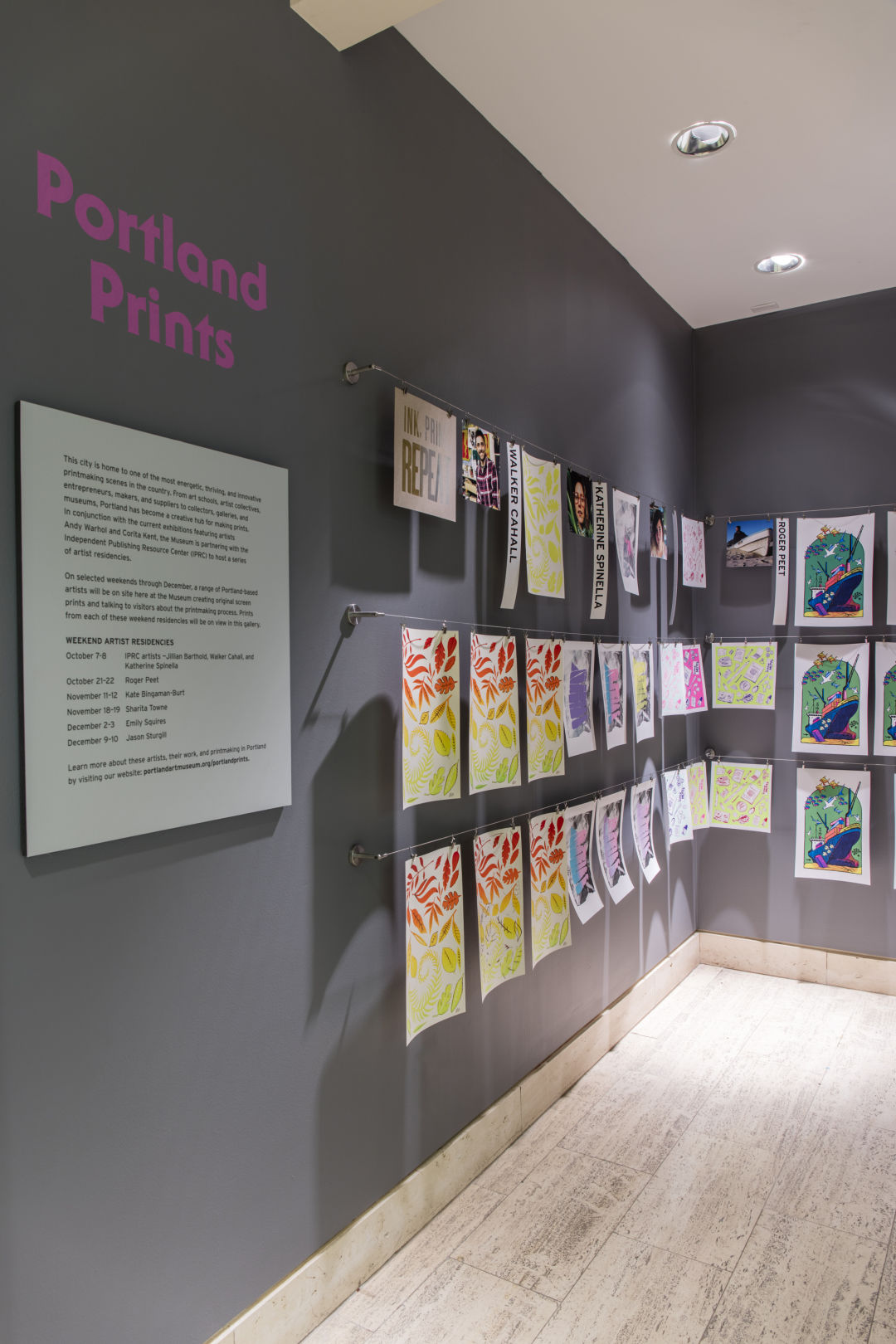Portland Prints with Andy Warhol and Corita Kent

Portland is home to one of the most energetic, thriving, and innovative printmaking scenes in the country. From art schools, artist collectives, entrepreneurs, makers, and suppliers to collectors, galleries, and museums, the city has become a creative hub for making prints. Portland Art Museum is celebrating screen printing and print making in the galleries this fall with Andy Warhol: Prints from the Collections of Jordan D. Schnitzer and His Family Foundation and Corita Kent: Spiritual Pop, and connecting to printmakers in our community through Portland Prints—a series of series of artist residencies, tours, and classes.
We asked some of the artists in residence to talk about the allure of screen printing and what inspires them. Learn more about the artists here. All of the artists’ prints are, or will be, on view as part of the exhibition.
What draws you to screen printing?
Walker Cahall: I am drawn to screen printing because I love the concept of repetition, quickly creating a tangible piece of art that I can give or sell at will. I also like the inherent flaws that come with silkscreen printing. The tiny irregularities are what make each print unique, and separate my prints from mass production.
Roger Peet: Screen printing is an immediate and powerful method to produce mass quantities of art that has a message to it. The best thing about screen printing is that anyone can do it, it has the same populist quality that graffiti has.
Jason Sturgill: I’m drawn to whatever art form that can help me spread the word of positivity and unity on this little blue ball we call home.
Sharita Towne: It’s quick. Direct.
Emily Squires: Today I am thinking about the art students in Paris in 1968 and how they occupied their school and took over the studio and used printmaking to amplify their voices in a demand for a different future. Screen printing is how I connect my heart with my actions.
Jillian Barthold: Screen printing is kind of like baking—with the right instruction and practice, anyone can do it. I find positivity and peace in knowing that each time I make a new screen print I am choosing to make art (and make art in a way) that is sharable, inclusive, and easily accessible in ways other practices are not.
Katherine Spinella: The versatility of the medium, its accessibility, its relationship with painting and photography, and its history.
Kate Bingaman-Burt: It's democratic! It's immediate! It's so fun to share. Plus, the personal pleasure of seeing mass multiples never ever gets old for me.
Talk about your artistic heroes and inspirations?
Walker Cahall: My most notable artistic influences are Keith Haring, Hokusai, M.C. Escher, and the works of WPA-era artists. These artists all have different styles but they also use shape and color to create dynamic and playful imagery that relies on a limited color palette to create meaning and depth.
Roger Peet: The tradition of screen printing within radical politics is vast and profound, and so many movements have produced powerful visual messaging without adding their names. It's really one of the most powerful and enduring political tools available, and in these dark times we will always need more of it.
Jason Sturgill: Gandhi.
Sharita Towne: Emory Douglas, Minister of Culture for the Black Panther Party.
Emily Squires: Corita Kent for transforming the practice of art education; Felix Gonzalez Torres for making radical love unapologetically visible; and Octavia Butler and Ursula K. LeGuin for showing me that imagination is a tool for revolution.
Jillian Barthold: Recently, I am in constant in awe and encouraged by the work of Tallulah Fontaine, Carson Ellis, Michael Heck, Ashley Ronning, Pheobe Wahl, Kate Bingaman-Burt, and so many others.
Katherine Spinella: My artistic heroes are varied across mediums, subjects, and disciplines. It’s inspiring to encounter practices that are vastly different from one another that spark conversation. Marina Abramovic, Mark Bradford, Sarah Cain, Karla Black, and many contemporary artists.
Kate Bingaman-Burt: Corita Kent! I have handed out her “Rules for Life and Making” to my students every year since I started teaching 15 years ago. They were passed to me on my very first day of design class in 1997 by my instructor, and I am just doing the same.
Join Kate Bingaman-Burt this Saturday from 12 -4pm for Portland Prints at the Museum.
